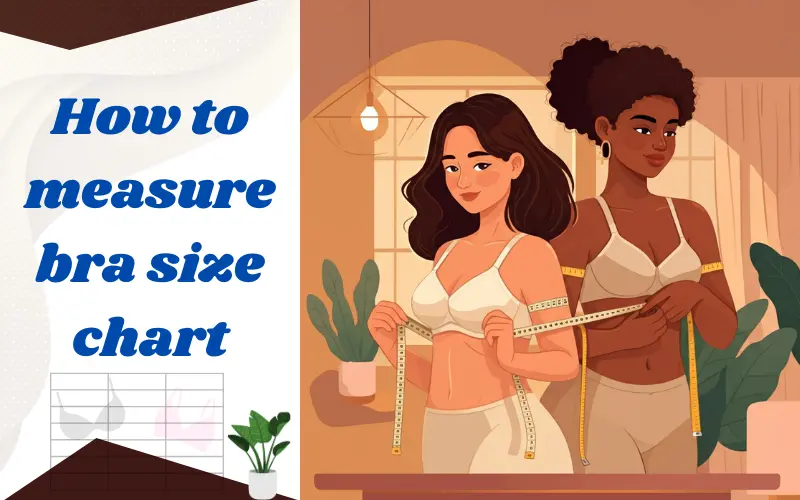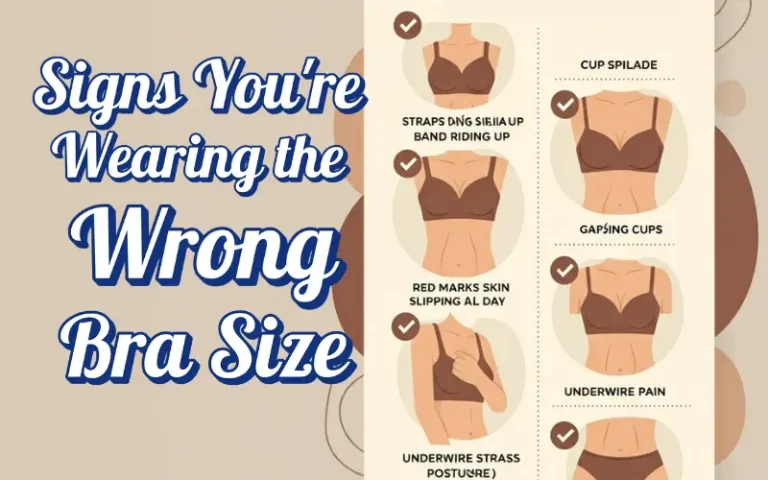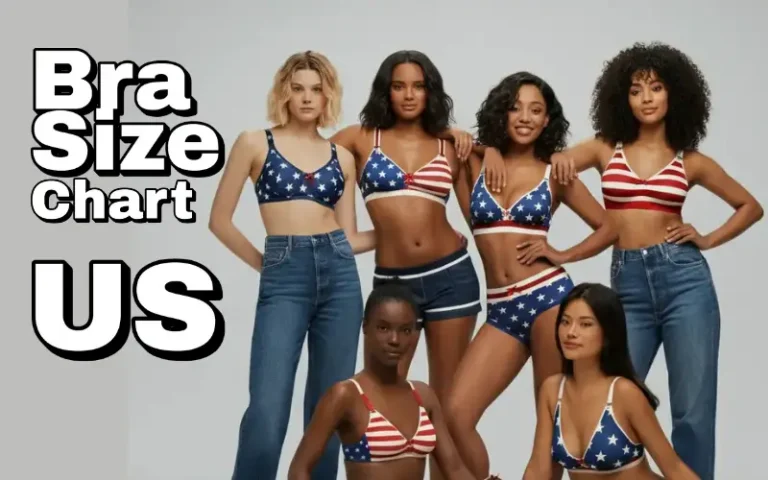How to Measure Bra Size Chart
How to Measure Bra Size Chart: A Complete Guide for the Perfect Fit

Discovering the excellent bra fit isn’t just about looking good, it has to do with feeling excellent. Wearing the wrong bra size can result in discomfort, poor posture, and confidence issues. Yet, many women’s are wearing bras that do not fit properly, simply because they have not measured themselves recently. Have you inspected your bra dimensions recently? if not, now’s the perfect time to learn! This complete guide will walk you through everything you need to know about measuring your
Why Measuring Your Bra Size Matters
A well fitted bra is more than simply a closet staple, it contributes to enhancing comfort, self confidence, and general health. Wearing the right size ensures proper posture, prevents underwire pinching, and eliminates strap digging. It also helps you relocate openly while using adequate assistance, whether at the workplace, the gym, or relaxing at home.
Most surprisingly, researches expose that as much as 80% of females wear the wrong bra size. Are you one of them? It’s typical for body forms and dimensions to change gradually as a result of weight fluctuations, hormone changes, and aging. Determining your bra dimension consistently ensures you’re always using the most effective fit for your requirements.
Tools You Need to Measure Bra Size
Before we jump into the process, gather a few basic tools to make measuring easier and more accurate. Here’s what you’ll need:
- A soft determining tape (flexible enough to wrap around your body).
- A mirror to check positioning.
- A pen and paper (or your phone) to write dimensions.
- A non-padded bra (finest for natural shapes throughout the dimension).
Got everything prepared? Perfect, now, you’re only minutes away from finding your suitable bra size!
Step by Step Guide to Measuring Band Size
Your band size is the foundation of your bra fit, and there’s no guesswork below. Adhere to these simple actions to get it right.
1. Setting the Tape.
Wrap the soft measuring tape around your ribcage, just under your bust, where the bottom of your bra band would rest.
2. Ensure Appropriate Fit.
See to it that the tape is tight but not digging right into your skin. It should lay flat and level, parallel to the floor.
3 Settle the Measurement.
Breathe out for precision, and afterwards round your measurement to the nearby number. If you get an even number, that’s your band size (e.g., 34). If it’s odd, round up to the following even number (e.g., 35 becomes 36).
Step by Step Overview to Measuring Cup Size
Currently that you have actually nailed the band size, it’s time to determine your cup size. This step is just as straightforward.
1. Position the Tape.
With the soft measuring tape, measure around the maximum circumference of your breast. The tape needs to rest gently against your skin without squishing your bust.
2. Note the Measurements.
Ensure the tape stays as straight as feasible, keeping it level around your back.
Deduct your band measurement from your bust measurement. The difference determines your cup size.
Here’s a quick referral Chart to determine your cup dimension based on the difference in inches:
- 1-inch difference = A cup
- 2-inch difference = B cup
- 3-inch difference = C cup
- 4-inch difference = D cup
- 5-inch difference = DD/E cup
For example, if your breast measurements are 37 inches and your band size is 34 inches, the 3-inch distinction means you are a 34C.
Understanding the Bra Size Chart
Before you start shopping, it’s essential to recognize how to utilize a bra size chart. This chart sets band size and cup size, helping you pick the specific mix perfect for your frame. Keep in mind that different brands might have slight variations, so constantly double check sizing using their Charts
Additionally, familiarize on your own with the sister Bra size, which are alternate sizes using the same cup quantity yet with a different band size. As an example, if you are a 36C, 34D, and 38B are your sis size are. This can help you find a comfortable fit when your usual size isn’t available.
Common Bra Fit Issues and Solutions
Even with accurate measurements, you might encounter some common fit problems. Below are ideas to repair them effectively:
Straps Digging Into Your Shoulders.
- Likely offender? Your band may be too loosened! Try tightening it or choose a smaller band size to add some support.
Center Gore Does Not Lay Flat.
- Your cup size may also be a little. Go up one size to ensure the bra fits easily over your chest.
Band Rides Up in the Back.
- This suggests a band that’s too loosened or overstretched. Relocate down a band size for a firmer, extra stable fit.
Breast Spilling Over Cups.
Just dimension up in the cup to have and support your bust tissue correctly.
Tips for Maintaining Your Bra Size Accuracy
Your bra size isn’t uncompromising, it changes with time because of changes in weight, hormones, or way of life. Right here are some suggestions for maintaining accuracy over the years:
Reassess every 6 years.
- Make it a habit to remeasure your Bra size continually, specifically after significant life modifications.
Store Bras Correctly.
- Prevent folding padded bras or squashing them in cabinets. Lay bras flat to maintain shape.
Hand Wash Your Bras Routinely.
- Expand the life of your bras by washing them carefully with a moderate cleaning agent.
Final Thoughts
Your bra is one of the most essential garments in your closet, affecting exactly how you feel and carry yourself every day. Routinely determining your bra size, understanding the bra size chart, and addressing fit issues promptly can transform your comfort and self confidence.
FAQs
How often should I examine my bra size?
It’s advised to measure your dimensions every six months or every year.
Can I measure my bra size in your home?
Absolutely! With the steps detailed above, you can determine your band and cup size rapidly and precisely from home.
What is a sibling size?
Sister sizes are alternate size that have the same cup volume with various band sizes (e.g., 34D and 36C).
Why is my bra uncomfortable after a few hours?
It could be a result of a wrong size or design. Reassess your measurements and attempt different styles to find a much better fit.







